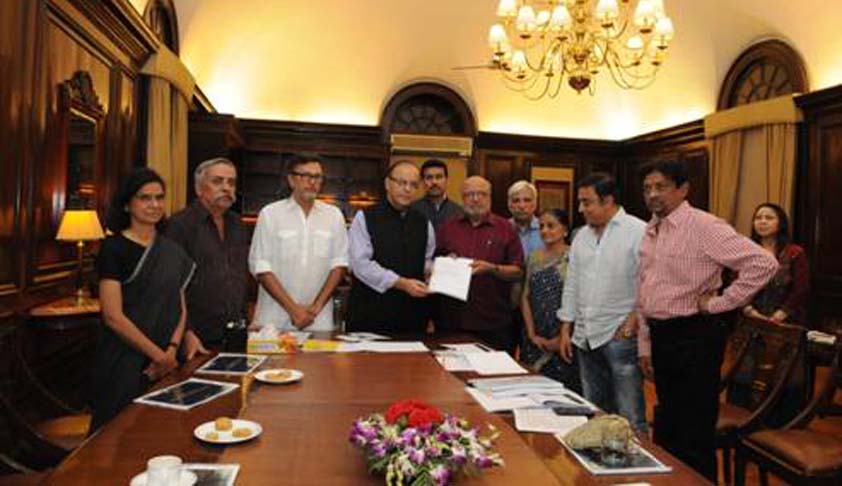Film certification in India

Union Minister for Information & Broadcasting, Arun Jaitley formed this committee with Shyam Bengal as the chairperson on January 1, 2016
Indian cinema is by far one of the most prudent in the world. Scenes that are common in films around the world are conspicuous by their absence, especially anything to do with sex or suggestions of sex. This is not only by choice or social pressure on film makers, but mainly due to the overarching presence of the Central Board of Film Certification (CBFC), which is commonly known as the Censor Board as it does more censoring than certifications. Will this report retrain the scissor-happy attitude of CBFC?
Of late, the Censor Board has not only reinforced the ban on intimacy in cinema but also removed any cuss words, oblique references to any caste, community, religion, social or political personality, making the directors rise in revolt on the increasing ingression in the creative space, making most Indian films bland and boring.
Due to increasing conflict with the filmmakers, the Censor Board has been in the news frequently for its scissor-happy attitude and carrying a legacy of curbing artistic freedom. A committee headed by veteran director Shyam Benegal recently submitted a report suggesting a set of reforms that would rather justify the name of the film certification body and aims to lay down a ‘holistic framework’ for CBFC.
On the very first day of 2016, the Ministry of Information & Broadcasting formed a committee under the Chairmanship of Benegal to suggest the best norms for film certification. The committee was expected to take note of best practices in various parts of the world in terms of film certification, allowing adequate space for artistic and creative expression. The panel was also requested to suggest procedures and guidelines for the CBFC Board to follow and examine staffing patterns with a view to recommending a framework that would provide efficient and transparent film certification.
The other members of the Committee were notable cinema personalities of India, including famed actor-director Kamal Hassan, producer Rakeysh Om Prakash Mehra, advertising guru Piyush Pandey, director Goutam Ghose, journalist Bhawana Somaaya, National Film Development Corporation chief Nina Lath Gupta, and K. Sanjay Murthy, Joint Secretary (Films) as Member-Convenor.
Elaborating the role of CBFC and his functions as the chairperson of the committee the veteran director said, “The scope of CBFC should be restricted to the certification of films and it should not indulge in cutting scenes or dialogues from a film based on individual principles.”
Benegal explained the idea behind forming such a committee and the brief that he received from the government before taking the chair of the committee…
Speaking about the primary objectives of the committee, Benegal added, “The committee had to carry out a detailed research before submitting the report. The factors such as improvement of administrative procedures, reducing human interference in film certification and understanding the changing values of the society were carefully taken into account. While developing the report we carefully suggested new categories such as UA12+, UA15+ and AC (Adult with caution) which would help audiences, particularly parents to make informed viewing decisions and respect the artist’s perspective.”
The Certification of films shall be carried out in accordance with the Guidelines proposed for certification that have been split into three sections, with each section required to be read with the other two – General Guidelines, Issue Related Guidelines and Category Specific Guidelines.
The committee has also made certain recommendations regarding the functioning of the board and has stated that the Board, including Chairman, should only play the role of a guiding mechanism for the CBFC, and not be involved in the day-to-day affairs of certification of films. The functions of the board shall be confined to the duties defined in the existing CBFC rules, which inter alia include an annual review of CBFC work, submission of annual report to the government, review of public reactions to films, and periodic recommendations for revision of guidelines. Given these limited functions, the size of the Board should be compact with one member representing each Regional Office. Therefore, the total composition of the Board should not be more than nine members and one Chairman.
The report submitted by Mr. Bengal and his team is expected to solve the basic ambiguity regarding film certification in India and look beyond individual or political interference assisting excellence of art in filmmaking. However, the committee sought some more time to give recommendations on the certification of films regarding issues related to animal welfare under the Prevention of Cruelty to Animals Act. Issues like smoking disclaimers will also be addressed by the committee in the following report.









